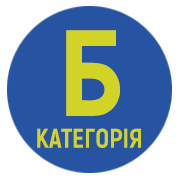TEACHING THE DESIGN OF INTERACTIVE WEB PAGES TO UNDERGRADUATE STUDENTS THROUGH JAVASCRIPT ARRAY METHODS AND STUDENT-GENERATED ASSIGNMENTS MINI-PROJECTS
DOI:
https://doi.org/10.32782/cusu-pmtp-2023-1-5Keywords:
mini-project, web programming, JavaScript array methods.Abstract
After completing university education, computer science students should have a good understanding of the current web technology and have the necessary skills to obtain a strong position in the industry. Considering that today there is a growing demand for dynamic, interactive and visually attractive sites, students should be skilled in using technologies that make they possible to develop such web resources. Introducing mini-projects of problem-based learning (“PBL mini-projects”) into the educational process can help educate these essential skills. To increase students' motivation to study data structures in JavaScript, it is advisable to avoid tasks on performing calculations, instead offer tasks on coding event handler functions, the execution of which demonstrates a clear visual effect. The purpose of this study is to design the PBL mini-project, which is carried out when students study JavaScript arrays. We present a set of properly chosen tasks in which students coding functions for automatic generation of a table with predefined data and a news box on a web page using JavaScript array methods. We demonstrate examples of solving these tasks. The program code is provided and analyzed. The implementation was conducted in a course “Web Applications Programming” and showed the expediency of using the described methodology.
References
Grove R.F. Trends in Teaching Web-based Development – A Survey of Pedagogy in Web Development Courses. International Conference on Web Information Systems and Technologies, – Society, e-Business and e-Government / e-Learning, 2007. Р. 361–365.
Lim B.B.L. Teaching Web Development Technologies: Past, Present, and (Near) Future. Journal of Information Systems Education. 2002. № 13 (2). Р. 117–124.
Brüngel R., Rückert J., Friedrich C.M. Project-Based Learning in a Machine Learning Course with Differentiated Industrial Projects for Various Computer Science Master Programs. 2020 IEEE 32nd Conference on Software Engineering Education and Training (CSEE&T). 2020. № 1–5.
Chandrashekhar N.S., Menon C.B. (). Implementation of Project Based Learning in Mechanical Engineering Education to Enhance Students’ Interest and Enthusiasm. Journal of Engineering Education Transformations, 2020 № 33. Р. 253–256.
Younis A.A., Sunderraman R., Metzler M.W., Bourgeois A.G. Developing parallel programming and soft skills: A project based learning approach. Journal of Parallel and Distributed Computing. 2021. № 158. Р. 151–163.
What is PBL? (n.d.). PBLWorks. URL: https://www.pblworks.org/what-is-pbl.
Smith A. Web and Software Engineering The Facebook Way – An Undergraduate Mini Project. Innovation in Teaching and Learning in Information and Computer Sciences. 2011. № 10 (3). Р. 58–67.
Array - JavaScript MDN. (2023, June 11). URL: https://developer.mozilla.org/en-US/docs/Web/ JavaScript/Reference/Global_Objects/Array.








